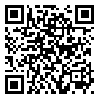Volume 1, Issue 3 (2008)
LCQ 2008, 1(3): 109-135 |
Back to browse issues page
Abstract: (9937 Views)
Mahmood Fotoohi Roudmajani Associate. Professor Of Persian Language and Literature Ferdowsi University The literary text is actually multiple meaning and flexible for interpretation and this feature is created by figurative language and tropes. This article attempts to investigate how the tropes create ambiguity and suspension of meaning in the text; how they damage the ordinary language and deconstruct it again. For this purpose the article classifies the tropes on the base of their functions in making a gap between literary world and ordinary language. It discusses the tropes function separately in preparing depth meaning for the text. Finally it concludes that the eternality of text and its flexibility for interpretation somewhat come in to being from tropes and figurative language. Figurative language is essentially deconstructive, because it initially makes different meanings by altering the ordinary usage of language elements, and then denies the possibility of its purposed meaning. The literary text in each reading therefore damages its own structure and deconstructs itself by way of differentiation and suspension of the meaning and this way achieves its ability to make dialogues with different kinds of generation and to be flexible for different reading in history.
Received: 2010/11/29 | Accepted: 2008/09/27 | Published: 2010/11/29
| Rights and permissions | |
 |
This work is licensed under a Creative Commons Attribution-NonCommercial 4.0 International License. |


